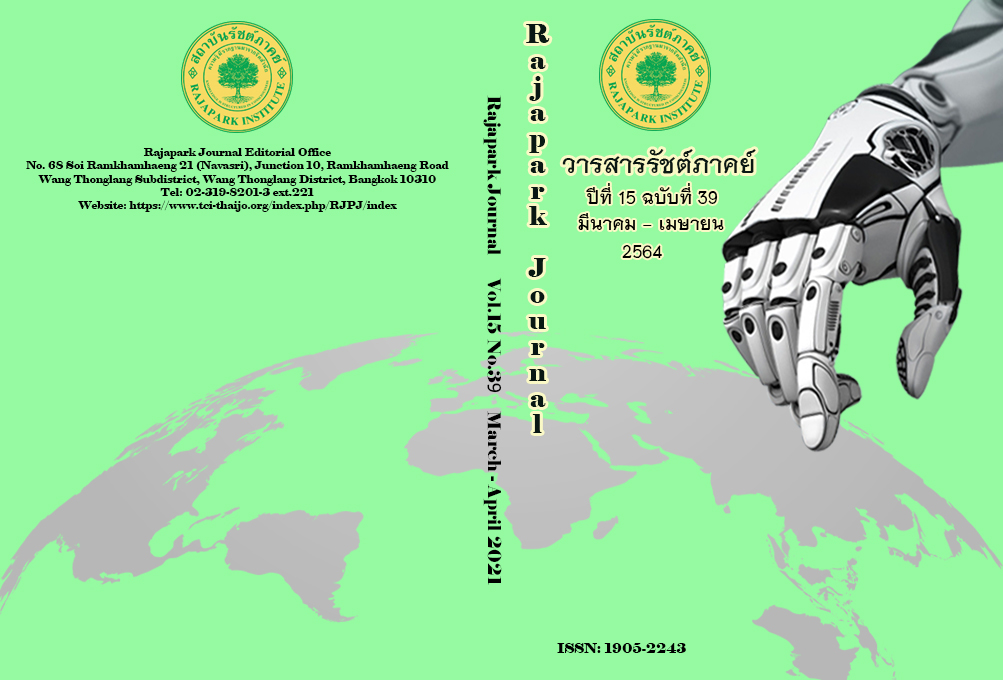The Legal Measure for Determination of the Sweetener Usage in Food and Beverage
Main Article Content
Abstract
The legal measures regarding the determination of using the sweetener in food and beverage which is the problem in applying the Food Act regarding the food label and advertisement by using comparative study with the foreign laws whether the laws regarding the label cover the suitable sugar level in the food or not. Whether the form of the label should make the customer understand in what extend. And whether it has the provision covering the advertisement that targeting the children or not. By using the quality study method, the document research and analyses and compare from textbook, research, thesis, journal, report, and electronic data. The research can be concluded that Thailand does not have the legal provision that cover the determination of sugar level that suitable for health. Moreover, the monochrome color nutrition label was difficult to understand and the provision regarding the advertisement does not specifically provide the protection for children. (1) The writer suggests the amendment on the Food Act B.E. 2522 (1979) for protection the benefit and safety of the customer by not allowing to produce, distribute the food that added the sweetener more than standard nutrition level; (2) The problem regarding the difficulties of understanding of the nutrition label by adopting the visual control measure which applied in the France legal system as guideline by amending the Ministry of Public Health’s regulation to requiring the presenting the traffic food nutri-score label; (3) Creating new criteria on food advertisement for the children by issuing the Food and Drug Administration regarding the criteria for the advertisement of the food for children B.E. (…) by adopting the laws of United States, European Union, and England as a guideline.
Article Details
Views and opinions appearing in the Journal it is the responsibility of the author of the article, and does not constitute the view and responsibility of the editorial team.
References
Ariyanuntaka, V. (1991). State-Social-Liberalism and Law. Bot Bundit Journal, 47(1), 111-118.
Charoenphandhu, R. (1977). General Civil Law, Volume 1. Bangkok: Charoenwit Printing.
Consumer Potential Development Division Food and Drug Administration, Ministry of Public Health. (2017). A project to survey opinions and values of the people that affect the consumption behavior of health products. (About nutrition labeling and purchasing health products) by the survey center, “Nida Poll”, National Institute of Development Administration. Retrieved December 15, 2020, from https://db.oryor.com/databank/uploads/fda /0883399001564625652_file.pdf
Deschasaux, M. et al. (2020). Association Between Nutritional Profiles of Foods Underlying Nutri-Score Front-of-Pack Labels and Mortality: EPIC Cohort Study in 10 European Countries. The BMJ, 370. https://doi.org/10.1136/bmj.m3173
Federal Communications Commission, The United States. (1995). Children's Television Programming. Retrieved June 6, 2017, form https://transition.fcc.gov/Bureaus/Mass_ Media/Factsheets/kidstv.txt
Health Statistics Subcommittee and Health Statistics Working Group, Thailand. (2014). Health Statistics Development Plan No. 1 B.E. 2557-2558 (2014-2015). Retrieved August 2, 2016, from http://osthailand.nic.go.th/files/social_sector/SDP_health291057-new6.pdf
International Health Policy Program, Thailand (IHPP). (2020). GDA with same color as GDA with Traffic light color, similarity (Knowing What Make Them the Difference), Retrieved August 16, 2020, from https://dol.thaihealth.or.th/Media/Index/75abb718-4546-ea11-80e8-00155d09b41f?ReportReason=0
Jitmala, S. (2018). Factors Affecting Consumer’s Buying Decision of Ready to Drink Green Tea after Sugar Tax. Master of Science (Agribusiness). Department of Agricultural and Resource Economics, Kasetsart University.
Muksong, C. (2005). Change in Consumption Pattern and Its Effect on Health: A Case Study of Sugar Consumption Between 1961-1996. Bangkok: Social and Health Institute.
Pongutta, S. et al. (2015). Complete report, study, understanding and use Packaging page nutrition labels (Front-of-pack labeling) of the Thai population. Food and Nutrition Policy Research Program For health promotion Foundation for Development International Health Policy, Food Bureau, Food and Drug Administration.
Sathiracharoensap, S., Boonyobhas, V., & Panwichit, S. (2008). Property seizure measure project, using fines and detention measures instead of fines under the Criminal Code. Bangkok: Chulalongkorn University.
Scheid, L. (2020). Germany Introduces Long-Awaited “Nutri-Score”. Retrieved December 15, 2020, from https://www.euractiv.com/section/agriculture-food/news/germany-introduces-long-awaited-nutri-score/
Tanaka, N., & Miyoshi, M. (2012). School lunch program for health promotion among children in Japan. Asia Pacific Journal of Clinical Nutrition, 21(1), 155-158.
Ungchusak, C. (2012). Sugar, Health and Appropriate Consumption Management. Bangkok: Office of Printing Affairs, the War Veterans Organization of Thailand.
Vatanasuchart, N., & Tanjor, S. (2014). Food sugar requirements and appropriate criteria. Food Journal (Thailand), 44(2), 33-39.
Wongwattanasan, C. (2000). Consumer protection law. Bangkok: Winyuchon.


